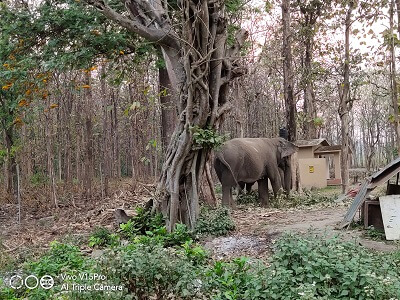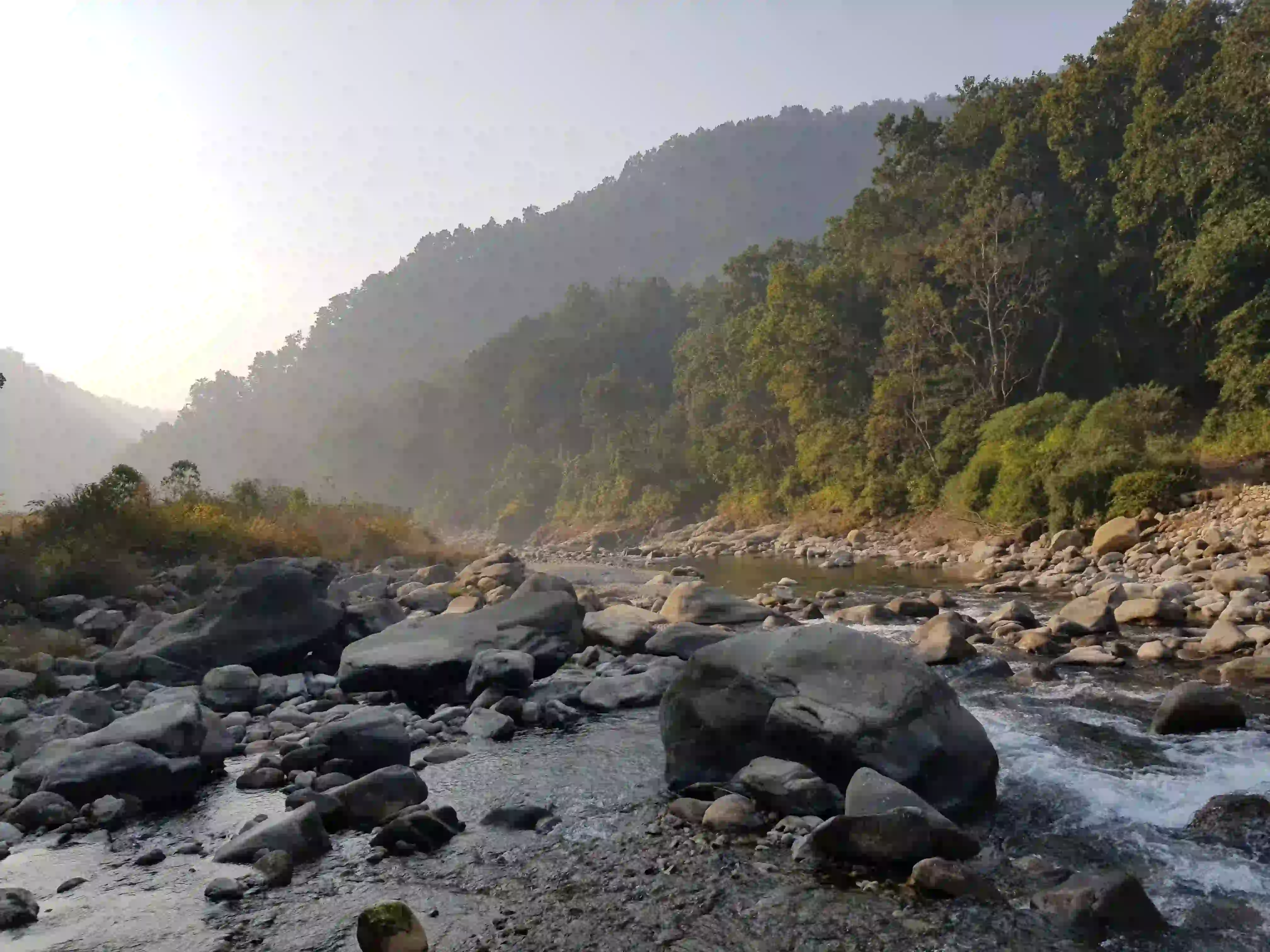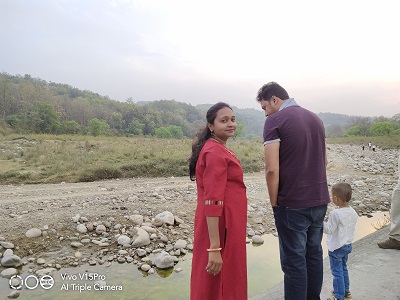A walk in the jungle
Jim Corbett Park is famous for its rich wildlife but only the lucky ones can sight the tiger
News of growing number of tigers in India has thrilled wildlife enthusiasts a lot but what was more heartening was that our neighbouring state of Uttrakhand houses 442 tigers in its forests. This was enough to pack our bags to get to see the big cat at close quarters. Then began our train journey from Delhi to Ramnagar station and onward to the Jim Corbett National Park, the nearest national park from Delhi. Lying in Nainital district of Uttarakhand, Jim Corbett National Park was the first tiger reserve in India and has a magical landscape. It was established in 1936 as Hailey National Park and in 1973 the first tiger project was launched here to protect the most endangered species ~ tiger. Once the train stopped at Ramnagar station, all the stories of the tiger we read in storybooks started flashing through the mind. Seeing the houses and villages around the national park made us wonder how the residents live their life with these tigers without any fear. It was just 8 o’clock at night but all the roads leading to the park looked totally deserted. It seemed the dark had engulfed the whole region, a favourable forest ambience. “Can we encounter a tiger on the road?” one of us asked the driver. He smilingly answered, “It all depends on your luck,”.
Also read: Should tourism be promoted in wildlife protected areas? (travellernook.com)
Inside the resort


Soon we reached our beautiful and green resort ~ Aahana The Corbett Wilderness. Located about 7 km from Ramnagar city, the 14-acre property has 48 luxurious rooms, divided into six categories ~ Corbett Club, Jungle Lore, Jim’s Retreat, Ranger Suite, Aahana Family Suite and The Villa. The best part of this property is that one side falls in the Brijrani zone of the national park. It means one can overlook teak and sal forests while swimming or dining.
Like outside, the ambiance of the resort is also very calm and peaceful, the only sound one could hear was that of insects and some stray animals, indicating one is inside the forest. The first thing we did in the resort was taste some of the local dishes. While we were enjoying our food, a hotel staff informed us that we need to get up early next morning for bird watching. They say early morning is the best time to get to know these winged creatures. The next morning, with its early morning breeze and birds chirping all over refreshed our mood. The wildlife expert of the resort informed us about the birds. The whole Corbett Park has 580 species and more than 130 birds visit the resort regularly. However, we couldn’t see all but a few colourful birds, perched on trees and making different sounds, which in itself was an experience. Then we spotted a variety of exotic coloured butterflies flitting around. In its herbal garden, it was engaging to know about herbs, which can cure many diseases.
Also read: Manali: Stepping into abode of Gods (travellernook.com)
Inside the park
The next morning was meant to visit the forest, spread over 520 square kilometres. It comprises hills, marshy depressions, riverine belts, grasslands and a large lake, which makes the reserve unique. The park is divided in four zones ~ Dhikala, Brijrani, Zhirna and Lohachaur. Among them nearest one from Ramnagar is Brijrani zone. Padded up with warm clothes, it was before dawn when we left for the forest, hoping to encounter the big cat. As the open four-wheeler jeep passed the gate, the first animal we saw was the elephant. It literally gave us goose bumps before the guide informed that it was tame.

“But don’t worry you can see those in the forest too,” he completed. Our first wild encounter was a Sambar deer that was walking freely. We also came across a few monkeys but our eyes were looking for the tiger. As the jeep went deep inside the forest, our hope enhanced many folds. But there was no sign of the tiger or for that matter any wild animal. Meanwhile, our driver-cum-guide refreshed our knowledge about the wildlife and Corbett Park. He informed that the forest is full of tigers and rare species like otter and the endemic fish-eating crocodile. But where are they today, we wondered. As it began getting sunny, our hopes of encountering the tiger began diminishing. But the driver assured us not to be disappointed as there was always a second chance. And the tiger can be seen only by lucky people.
Also read: Odhisha: Hidden treasure in the East (travellernook.com)
Corbett National Park
The Corbett National Park got its name in 1957 after Jim Corbett, the famous naturalist and photographer. This is India’s first national park and beyond doubt the most attractive one in India. The park is located in the foothills of the Himalayas, in the midst of lush greenery and uneven mountains with varying heights, ranging from about 1300 feet to nearly 4000 feet. If one is interested, one can spend hours watching the deer that abound in the park. Barking deer, spotted deer, sambar and chinkara are some of the different species found here. Another major attraction here is the aquatic reptiles. Different kinds of crocodiles can also be spotted here. Corbett National Park is really worth a visit, to see the nature’s variety and beauty. This park is certainly a first among equals.
.png)

